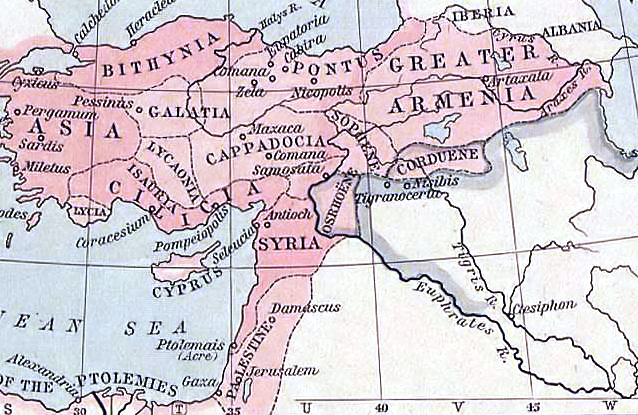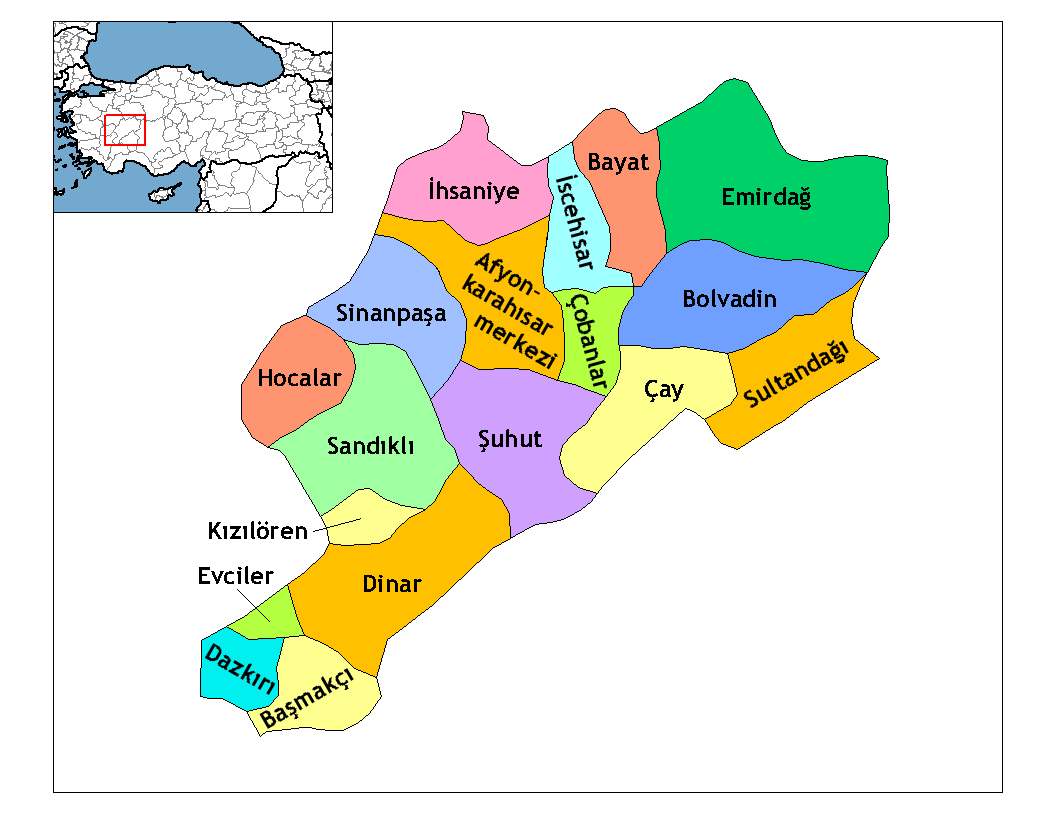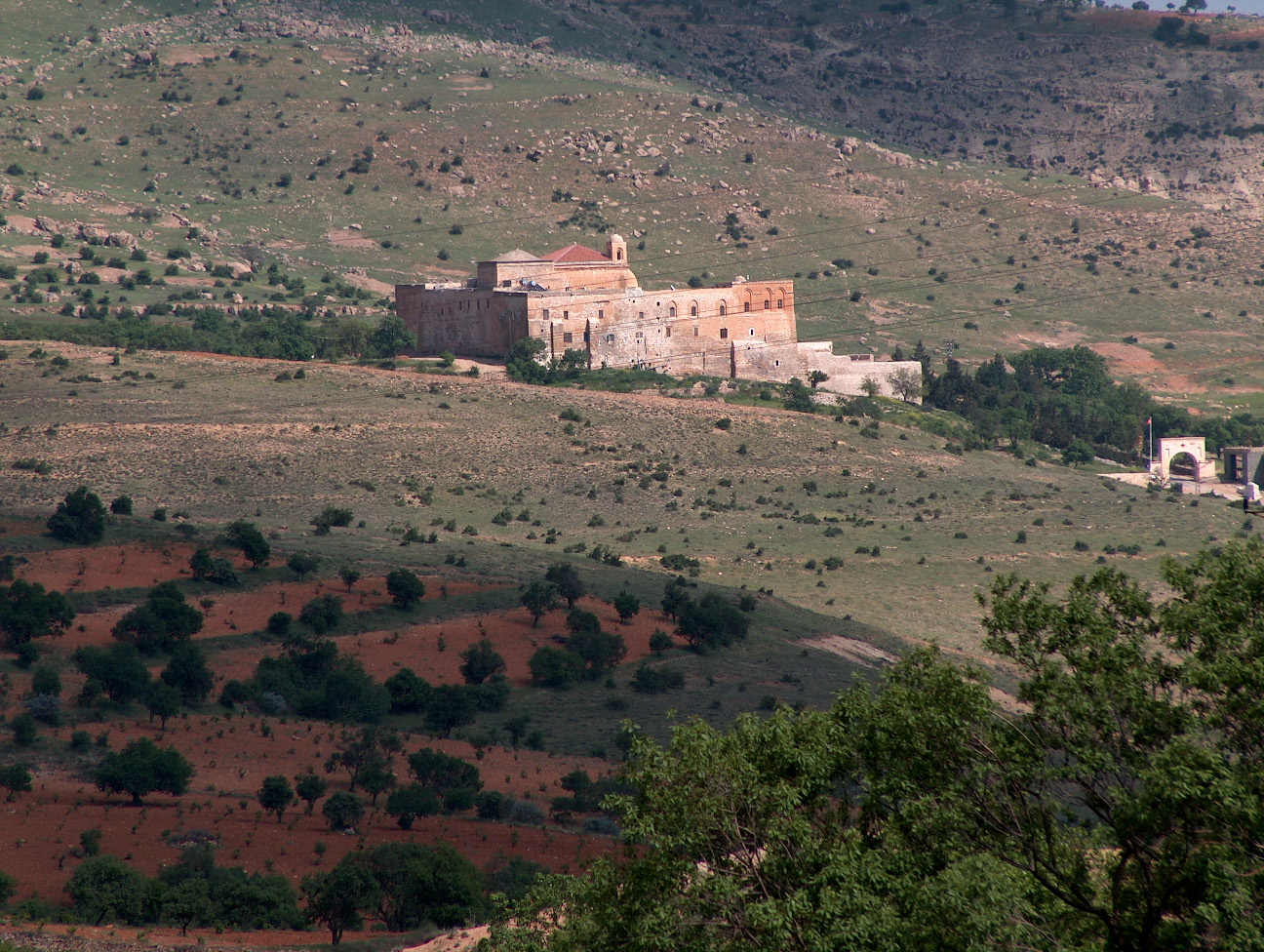|
Nusaybin
Nusaybin () is a municipality and district of Mardin Province, Turkey. Its area is 1,079 km2, and its population is 115,586 (2022). The city is populated by Kurds of different tribal affiliation. Nusaybin is separated from the larger Kurdish-majority city of Qamishli by the Syria–Turkey border. The city is at the foot of the Mount Izla escarpment at the southern edge of the Tur Abdin hills, standing on the banks of the Jaghjagh River (), the ancient Mygdonius (). The city existed in the Assyrian Empire and is recorded in Akkadian inscriptions as ''Naṣibīna''. Having been part of the Achaemenid Empire, in the Hellenistic period the settlement was re-founded as a ''polis'' named "Antioch on the Mygdonius" by the Seleucid dynasty after the conquests of Alexander the Great. A part of first the Roman Republic and then the Roman Empire, the city (; ) was mainly Syriac-speaking, and control of it was contested between the Kingdom of Armenia, the Romans, and the Part ... [...More Info...] [...Related Items...] OR: [Wikipedia] [Google] [Baidu] |
Church Of Saint Jacob Of Nisibis
Mar Yakov Church or Mor Yakup Church ( ''Idto d-Mor Ya'qub d-Nsibin'', ), also known as the Church of Saint Jacob in Nisibis, is a historic church in Nusaybin, southeastern Turkey. Archaeological excavations revealed that the 4th-century church building was originally the baptistery of a cathedral, which no longer exists. It is not determined whether this church belonged to Syriac Orthodox Church or the Church of the East, but it is under the jurisdiction of the Syriac Orthodox Church which it is most likely linked to. History The historical church is located in Nusaybin ilçe (district), formerly Nisibis, either of the Mardin Province of the Syriac Orthodox Church or the Nisibis province of the Church of the East, in southeastern Turkey. It is situated around east of the Zeynel Abidin Mosque Complex. The church is dedicated to Syriac Jacob of Nisibis, who became bishop of Nisibis by appointment of the Episcopal congress, convened in Virgin Mary Church of Diyarbakır in 309, an ... [...More Info...] [...Related Items...] OR: [Wikipedia] [Google] [Baidu] |
Jacob Of Nisibis
Saint Jacob of Nisibis (, '; Greek: Ἅγιος Ἰάκωβος Ἐπίσκοπος Μυγδονίας; Armenian: ), also known as Saint Jacob of Mygdonia, Saint Jacob the Great, and Saint James of Nisibis, was a hermit, a grazer and the Bishop of Nisibis until his death. He was lauded as the "Moses of Mesopotamia", and was the spiritual father of the renowned writer and theologian Saint Ephrem the Syrian.Venables (1911) Saint Jacob was present at the first ecumenical council at Nicaea, and is venerated as a saint by the Church of the East, Eastern Orthodox Church, Oriental Orthodox Church, Roman Catholic Church, and Eastern Catholic Churches. Biography Saint Jacob was the son of prince Gefal, and was born in the city of Nisibis in Mesopotamia in the 3rd century AD. It is claimed that he was a relative of Saint Gregory the Illuminator. Saint Jacob became a Confessor of the Faith for his suffering during persecution by Emperor Maximian. Saint Jacob became an anchorite in c. 2 ... [...More Info...] [...Related Items...] OR: [Wikipedia] [Google] [Baidu] |
Qamishli
Qamishli is a city in northeastern Syria on the Syria–Turkey border, adjoining the city of Nusaybin in Turkey. The Jaghjagh River flows through the city. With a 2004 census population of 184,231, it is the List of cities in Syria, ninth most-populous city in Syria and the Al-Hasakah Governorate, second-largest in Al-Hasakah Governorate after Al-Hasakah. Qamishli has traditionally been a Christian Assyrian majority city, but is now predominantly populated by Kurds in Syria, Kurds with large numbers of Arabs and Assyrians in Syria, Assyrians and a smaller number of Armenians in Syria, Armenians. It is northeast of Damascus.Zurutuza, Carlos.Syria's first Kurdish-language newspaper. Al Jazeera English, Al Jazeera. 18 October 2013. Retrieved on 22 October 2013. The city is the administrative capital of the Qamishli District in Al-Hasakah Governorate, and the administrative center of Nahiya Qamishli, Qamishli Subdistrict, consisting of 92 localities with a combined population of 232, ... [...More Info...] [...Related Items...] OR: [Wikipedia] [Google] [Baidu] |
Syria–Turkey Border
The border between the Syrian Arab Republic and the Republic of Turkey (; ) is long, and runs from the Mediterranean Sea in the west to the tripoint with Iraq in the east. It runs across Upper Mesopotamia for some , crossing the Euphrates and reaching as far as the Tigris. Much of the border follows the Southern Turkish stretch of the Baghdad Railway, roughly along the 37th parallel between the 37th and 42nd eastern meridians. In the west, it almost surrounds the Turkish Hatay Province, partly following the course of the Orontes River and reaching the Mediterranean coast at the foot of Jebel Aqra. Description Since Turkey's 1939 appropriation of the Hatay State, the Syrian–Turkish border touches the Mediterranean coast at Ras al-Bassit, south of Mount Aqra (). Hatay province borders the Syrian Latakia and Idlib governorates. The westernmost (and southernmost) border crossing is at , some 3 km west of Yayladağı. The border reaches its southernmost point at , 2& ... [...More Info...] [...Related Items...] OR: [Wikipedia] [Google] [Baidu] |
Jaghjagh River
The Jaghjagh River ( ''Nahr Jaqjaq'', ''Nahr al-Jaghjagh'', or ''Nahr al-Hirmas'', , ''Nahro dJaqjaq'', ) is a tributary of the Khabur River in Turkey and Syria. The river was known to the ancient Greeks as the ''Mygdonius'' (), and lent its name to the city of Antioch in Mygdonia.NISIBIS'' Encyclopaedia Iranica Sources The river has two sources. The longer branch, known as Siyahsu (meaning ''dark water'', Kurdish ''Av-e Resh''), rises near the village of Toptepe in Mardin Province, Turkey, and flows 10 km to the confluence with the shorter branch, known as Beyazsu (meaning ''white water'', Kurdish ''Av-e Spi''). Course The river crosses into Syria near the cities of Nusaybin and Qamishli. The water is heavily used for irrigation, in both Turkey and Syria. The river flows into the Khabur River at Al-Hasakah. Wildlife Freshwater mussels and turtles live in the river. Trout Trout (: trout) is a generic common name for numerous species of carnivorous fre ... [...More Info...] [...Related Items...] OR: [Wikipedia] [Google] [Baidu] |
Mardin Province
Mardin Province (; ; ; ) is a province and metropolitan municipality in Turkey. Its area is 8,780 km2, and its population is 870,374 (2022). The largest city in the province is Kızıltepe, while the capital Mardin is the second largest city. Districts Mardin Province is divided into 10 districts: * Artuklu * Dargeçit * Derik * Kızıltepe * Mazıdağı * Midyat * Nusaybin * Ömerli * Savur * Yeşilli Demographics Mardin Province is a linguistically, ethnically and religiously diverse province. The dominant ethnic groups are Arabs, Assyrians, and Kurds, of which Kurds constitute a majority. Other minor groups include Armenians, Chechens and Turks, while Jews lived in the area before migrating to Israel around 1948. The Chechens settled in the region during the Russo-Turkish War in 1877/1878. The distinctive Mhallami community also reside in the district. The province is considered part of Turkish Kurdistan. In 1990, it was estimated that Kurds const ... [...More Info...] [...Related Items...] OR: [Wikipedia] [Google] [Baidu] |
Tur Abdin
Tur Abdin (; ; ; or ) is a hilly region situated in southeast Turkey, including the eastern half of the Mardin Province, and Şırnak Province west of the Tigris, on the Syria–Turkey border, border with Syria and famed since Late Antiquity for its Christian monasteries on the border of the Roman Empire and the Sasanian Empire. The area is a low plateau in the Anti-Taurus Mountains stretching from Mardin in the west to the Tigris in the east and delimited by the Mesopotamia, Mesopotamian plains to the south. The Tur Abdin is populated by more than 80 villages and nearly 70 monastery buildings and was mostly Syriac Orthodox Church, Syriac Orthodox until the early 20th century. The earliest surviving Christian buildings date from the 6th century. The name "Tur Abdin" is . Tur Abdin is of great importance to the Syriac Orthodox Church, Syriac Orthodox, for whom the region used to be a monastic and cultural heartland. The Assyrian people, Assyrian community of Tur Abdin call themsel ... [...More Info...] [...Related Items...] OR: [Wikipedia] [Google] [Baidu] |
Sasanian Empire
The Sasanian Empire (), officially Eranshahr ( , "Empire of the Iranian peoples, Iranians"), was an List of monarchs of Iran, Iranian empire that was founded and ruled by the House of Sasan from 224 to 651. Enduring for over four centuries, the length of the Sasanian dynasty's reign over ancient Iran was second only to the directly preceding Arsacid dynasty of Parthia. Founded by Ardashir I, whose rise coincided with the decline of Arsacid influence in the face of both internal and external strife, the House of Sasan was highly determined to restore the legacy of the Achaemenid Empire by expanding and consolidating the Iranian nation's dominions. Most notably, after defeating Artabanus IV of Parthia during the Battle of Hormozdgan in 224, it began competing far more zealously with the neighbouring Roman Empire than the Arsacids had, thus sparking a new phase of the Roman–Iranian Wars. This effort by Ardashir's dynasty ultimately re-established Iran as a major power of late an ... [...More Info...] [...Related Items...] OR: [Wikipedia] [Google] [Baidu] |
Roman Mesopotamia
Mesopotamia was the name of a Roman province, initially a short-lived creation of the Roman emperor Trajan in 116–117 and then re-established by Emperor Septimius Severus in c. 198. Control of the province was subsequently fought over between the Roman and the Sassanian empires until the Muslim conquests of the 7th century. Trajan's province In 113, the Roman emperor Trajan (r. 98–117) launched a war against Rome's long-time eastern rival, the Parthian Empire. In 114, he conquered Armenia, which was made into a province, and by the end of 115, he had conquered northern Mesopotamia. This too was organized as a province in early 116, when coins were minted to celebrate the fact. Later in the same year, Trajan marched into central and southern Mesopotamia (enlarging and completing the province of Mesopotamia) and across the river Tigris to Adiabene, which he annexed into another Roman province, Assyria. But he did not stop there. In the last months of 116, he captured the ... [...More Info...] [...Related Items...] OR: [Wikipedia] [Google] [Baidu] |
Districts Of Turkey
The Provinces of Turkey, 81 provinces of Turkey are divided into 973 districts (''ilçeler''; sing. ''ilçe''). In the Ottoman Empire and in the early Turkish Republic, the corresponding unit was the ''qadaa, kaza''. Most provinces bear the same name as their respective provincial capital (political), capital districts. However, many urban provinces, designated as greater municipalities, have a center consisting of multiple districts, such as the provincial capital of Ankara Province, Ankara province, Ankara, The City of Ankara, comprising nine separate districts. Additionally three provinces, Kocaeli, Sakarya, and Hatay have their capital district named differently from their province, as İzmit, Adapazarı, and Antakya respectively. A district may cover both rural and urban areas. In many provinces, one district of a province is designated the central district (''merkez ilçe'') from which the district is administered. The central district is administered by an appointed pr ... [...More Info...] [...Related Items...] OR: [Wikipedia] [Google] [Baidu] |
Mount Izla
Mount Izla ( ''Ṭūr Īzlā' ''),Thomas A. Carlson et al., “Izla — ܛܘܪܐ ܕܐܝܙܠܐ ” in The Syriac Gazetteer last modified January 14, 2014, http://syriaca.org/place/100. also Mountain of Nisibis or briefly in the 9th century Mount Kashyari, is a low mountain or ridge near Nisibis in what once a part of Assyria, then Sassanid Persian province of Asoristan, but is now southeastern Turkey, along the border with Syria. The ridge is the location of dozens of ancient monasteries which were built by the Assyrian Church of the East and Syriac Orthodox Church in the early centuries of Eastern Rite Christianity. In modern times, all of the monasteries are in ruins except for that of Mar Melke reconsecrated in the 1930s, Mor Yakub Monastery, founded in Dibek in 2012–2013, and the Monastery of Mor Augin which was refounded in 2008 after being abandoned in the 70's. Geography Though called a mountain, it is actually a ridge running from east to west, with a plateau o ... [...More Info...] [...Related Items...] OR: [Wikipedia] [Google] [Baidu] |
Kingdom Of Armenia (antiquity)
The Kingdom of Greater Armenia or simply Greater Armenia or Armenia Major ( '; ), sometimes referred to as the Armenian Empire under Tigranes the Great, Tigranes II, was an Armenians, Armenian kingdom in the Ancient Near East which existed from 331 BC to 428 AD. Its history is divided into the successive reigns of three Royal family, royal dynasties: Orontid dynasty, Orontid (331–200 BC), Artaxiad dynasty, Artaxiad (189 BC12 AD), and Arsacid dynasty of Armenia, Arsacid (52–428). The root of the kingdom lies in the Satrapy of Armenia of the Achaemenid Empire of Iran, which was formed from the territory of Urartu (860–590 BC) after it was conquered by the Medes in 590 BC. The satrapy became a kingdom in 321 BC during the reign of the Orontid dynasty after the conquest of Persia by Alexander the Great, which was then incorporated as one of the Hellenistic period, Hellenistic kingdoms of the Seleucid Empire. Under the Seleucid Empire ( ... [...More Info...] [...Related Items...] OR: [Wikipedia] [Google] [Baidu] |






